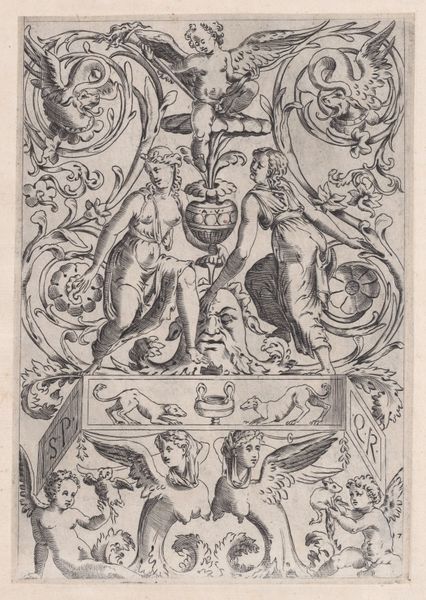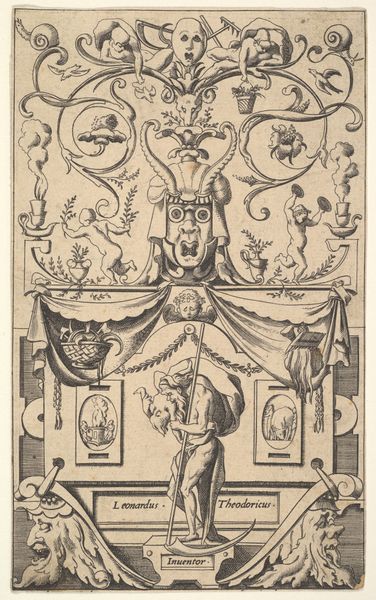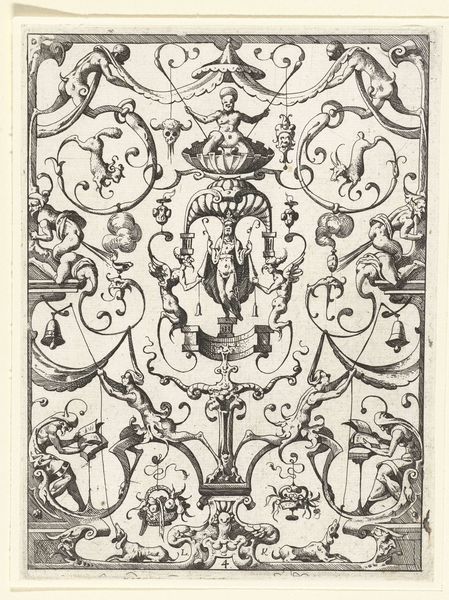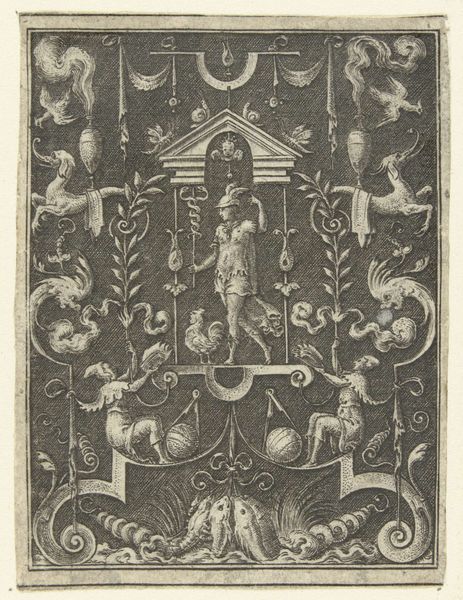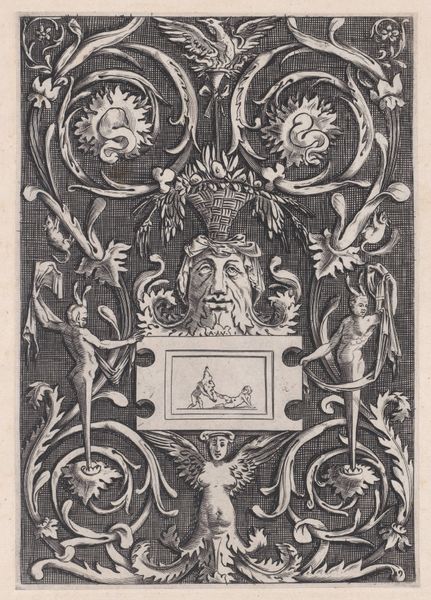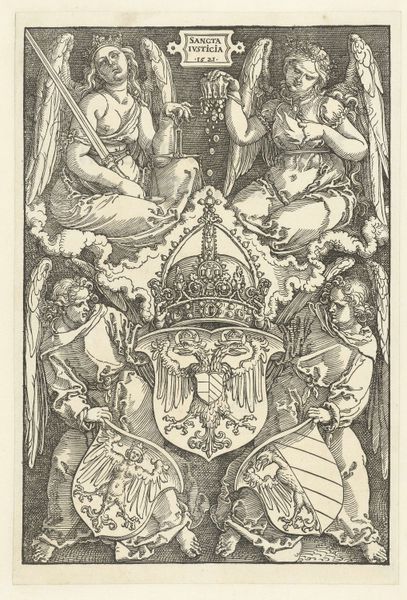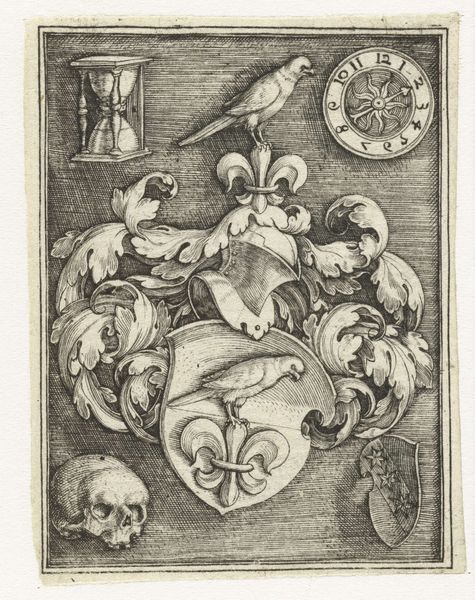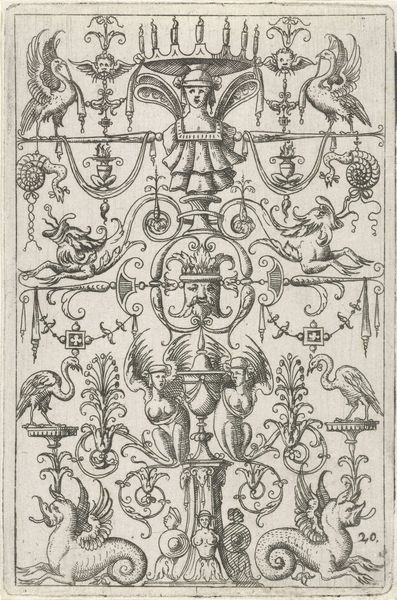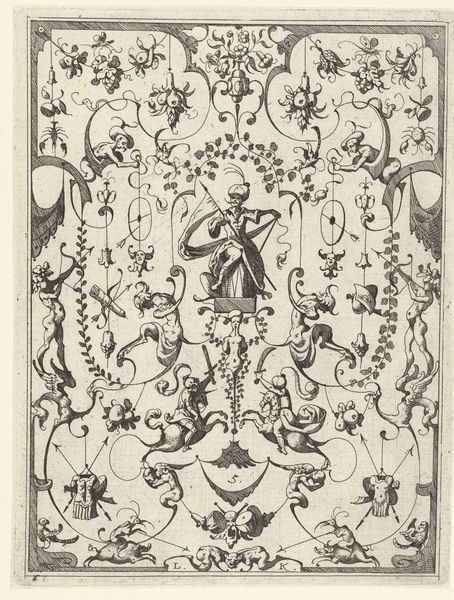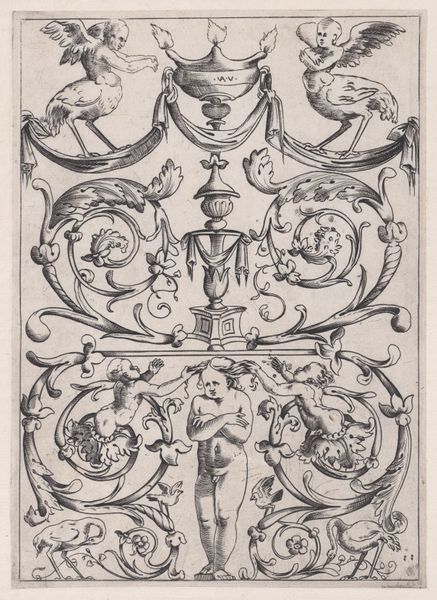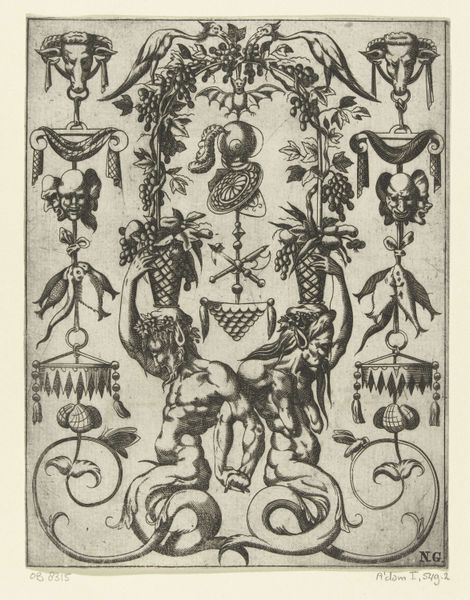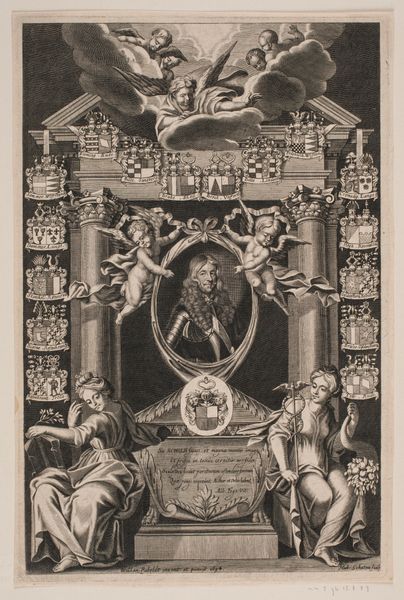
drawing, print, engraving
#
drawing
#
allegory
#
pen drawing
# print
#
figuration
#
11_renaissance
#
italian-renaissance
#
engraving
Dimensions: 8 1/8 x 5 9/16 in. (20.6 x 14.2 cm)
Copyright: Public Domain
Curator: This print is titled "Ornamental Panel," created by Agostino Veneziano sometime between 1514 and 1536. Editor: It's quite striking! The composition, packed with figures and flourishes, feels almost claustrophobic, but the line work is incredibly detailed. Curator: Indeed. Ornamental prints like this one served as models for artisans, influencing decorative arts across Europe. They reveal the Italian Renaissance fascination with classical forms. The use of the grotesque, masks, and animal-human hybrids are characteristic. Editor: Absolutely, and observe how the engraver masterfully employs line weight to create depth and texture. The contrast between light and shadow lends a sculptural quality to what is essentially a two-dimensional work. Curator: That contrast was key for its societal function as it provided patterns applicable to all materials of manufacture: tapestry, silver, and even monumental architecture. What we must not gloss over is how the imagery served political ends as a marker of class identity, erudition, and sophisticated taste in a period when city-states consolidated into the larger states we know today. Editor: I’m drawn to the interplay of the human, animal, and mythical figures—the cherubs, the swan with the serpent, the satyrs, and those fantastic goat-like creatures. Curator: These figures all draw from a rich history. The inclusion of hybrid figures signals a connection to the classical past, lending an aura of prestige and sophistication to any object or space adorned with such imagery. We must be conscious of how objects like this helped craft aristocratic and humanist power and credibility. Editor: Fascinating how a small print can carry such cultural weight! The dense composition and exquisite detail draw you in, demanding closer inspection. Curator: Prints provided increased social mobility by supplying cheap patterns and inspiration across territories in Europe. Editor: It speaks volumes about how art can both reflect and shape society. Curator: Indeed; now, I understand ornamental objects in terms of political aspirations.
Comments
No comments
Be the first to comment and join the conversation on the ultimate creative platform.
